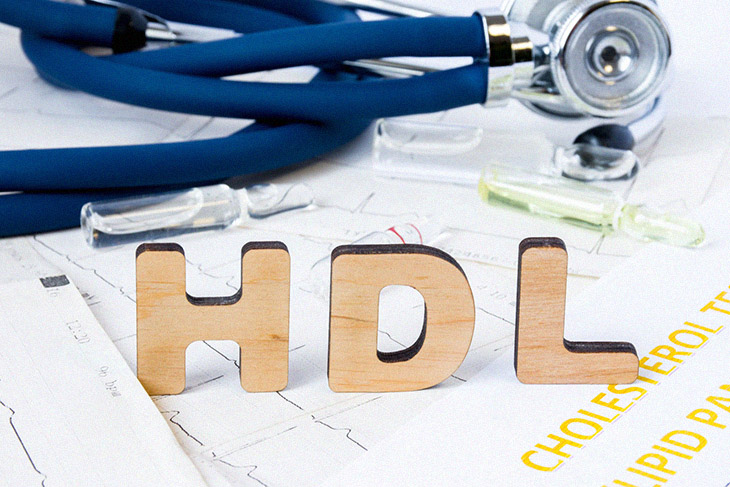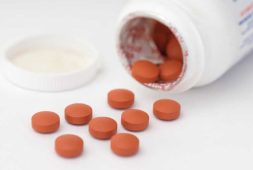
When it comes to cardiovascular health, good cholesterol will be your number one ally. There are so many benefits that come with taking foods that are high in HDL, or high-density lipoprotein.
When it comes to the studies made by researchers and health experts, findings have been made regarding this matter. Here are some of what you need to know:
- According to a recent study that tested how well high-density lipoprotein (HDL), or “good” cholesterol reduces inflammation. This may help identify people who are more likely to develop cardiovascular disease that’s associated with atherosclerosis.
- In the same study, the anti-inflammatory capacity of good cholesterol was much higher in people who did not experience cardiovascular events as compared to those who did.
- Based on the findings of the study, the experts were able to conclude that for every 22 percent increase in anti-inflammatory HDL, this reduced the risk of experiencing a cardiovascular event during the next 10 years by 23 percent. HDL has a protective effect of increased HDL anti-inflammatory capacity. This was also higher in women than men.
Researchers and health experts know how HDL is extremely important when it comes to reducing inflammation. When the body’s HDL is at its healthy levels this also helps reduce the risk of stroke and heart attack. And to date, intervention trials using medications to improve or increase HDL levels have not been successful. Moreover, genetic research also indicates that lifelong high or low levels of HDL are not related to cardiovascular outcomes, as what people might assume.
Because of the unknown, many cardiovascular risk prevention researchers are shifting their focus on HDL studies. Instead of looking into circulating HDL levels, they’re honing in on its actual functional ability. At this point, a research team from the Netherlands has looked into the relationship between HDL’s ability to reduce inflammation and the risk of experiencing a first cardiovascular event.
Dr. Uwe J. F. Tietge, Ph.D., senior study author and a professor and head of the Division of Clinical Chemistry at the Karolinska Institute in Stockholm, Sweden, shares, “HDL are very complex particles with anti-atherosclerotic functions that are not reflected by measuring just the cholesterol quantity.” He continues, “Atherosclerosis [plaque buildup in the arteries] underlying cardiovascular disease is increasingly recognized as a disease with a strong inflammatory component, and a central biological function of HDL is to decrease inflammation.”
The team analyzed data collected from 680 adults and they found solid evidence to suggest that HDL’s ability to reduce inflammation is closely linked to a reduced risk of a cardiovascular event. In the said study, people who have not experienced a cardiovascular event demonstrated higher anti-inflammatory HDL levels. They compared these to the lower levels from participants who did go through one.
Dr. Uwe J.F. Tietge, Ph.D, explains, “By using a novel research tool, our results provide strong support for the concept that plaque buildup in the arteries has an inflammatory component and that the biological properties of HDL particles have clinical relevance to cardiovascular disease risk prediction.” The study came out in the journal Circulation. This is the flagship journal of the American Heart Association’s (AHA). The study also received funding from the Netherlands Organization for Scientific Research and the Swedish Heart-Lung Foundation.
HDL is a Natural Anti-Inflammatory
HDL has been considered the good cholesterol because of its ability to collect excess cholesterol found in the blood. The excess is then taken back to the liver where’s it’s broken down and removed from the body.
HDL also has the ability to reduce inflammation in the cells lining blood vessels. This happens because HDL removes cholesterol stored in macrophage foam cells in atherosclerotic plaques before it transports these to the liver. And as mentioned earlier, atherosclerosis occurs when plaque (a substance made of cholesterol, calcium, fat, and other molecules) accumulates on the inner walls of arteries.
As deposits of plaque increase, these can slowly narrow the blood vessel. Hence, what happens is that there is a reduction of blood flow and oxygen delivery to the different parts of the body and organs. If the case becomes severe, the sufferer can expect major health concerns such as stroke, heart attack, and even death.
When HDL does its job by removing cholesterol from foam cells in plaques, the size of the buildup crucially decreases. When it does its job properly, the amount of inflammation will be much less of a problem to the person. For these good reasons and for the crucial factors that come with HDL, healthcare professionals oftentimes include circulating HDL levels in several cardiovascular risk assessment tools.
HDL and its Anti-Inflammatory Capacity
The researchers also conducted a new study. This time, they included participants from a larger study: the PREVEND (Prevention of Renal and Vascular End Stage Disease) Study.
The PREVEND Study started in 1998. They are looking into the relationship between cardiovascular disease and kidney damage. The study consisted of around 40,856 participants, all adults residing in Groningen, Northern Netherlands.
From the large number of participants they gathered, the researchers then selected 680. This time, excluded were those who experienced a cardiovascular event before the program tracking period.
From what they gathered, they used 680 participants to create 340 case-control pairs of individuals. Hence, there were two groups: an experimental group of 340 people who experienced an initial cardiovascular event during the PREVEND tracking period and 340 people who had not.
The term “case-control pairs” may be unfamiliar to many of you. This refers to the fact that individuals from the experimental group were matched with someone from the control group. The pairs shared the same sex, smoking status, and similar HDL levels. The researchers also ensured that the pair weren’t more than five years apart.
The researchers then defined a cardiovascular event. This was when the participant experienced either a non-fatal or fatal heart attack. They also made sure that they received a diagnosis of ischemic heart disease, or have undergone surgery to fix and open up clogged coronary arteries.
The researchers extracted HDL through blood samples. They assessed how much this was able to reduce inflammatory responses in endothelial cells, the cells that line blood vessels. They also measured the C-reactive protein levels. This substance increases in response to body-wide inflammation. Then, they assessed the participants’ cholesterol efflux capacity. The said capacity refers to how effectively their HDL removes cholesterol from cells that’s similar to plaque.
After the researchers carefully analyzed the factors, they discovered that HDL anti-inflammatory capacity was higher in people who did not experience cardiovascular events (31.6 percent) than in those who did (27 percent). They come up with these findings during the follow-up period between 1997 to 2009. For every 22 percent increase in HDL anti-inflammatory capacity, the risk of a heart event in the following 10 years was reduced by 23 percent.
It’s also important to note that the HDL anti-inflammatory capacities of these volunteers were not connected to the circulating HDL cholesterol levels, cholesterol efflux efficiency, or C-reactive protein levels. More importantly, the protective effect of a higher HDL anti-inflammatory capacity was more apparent in women.
Improving Cardiovascular Risk Prediction
During the study, the researchers were able to improve cardiovascular risk prediction. This was made possible because the factored HDL anti-inflammatory capacity into the Framingham Risk Score. If this wasn’t done, they replaced HDL levels with HDL anti-inflammatory capacity in the formula.
The Framingham Risk Score is a common tool for healthcare professionals. They use this to assess the risks connected to developing coronary artery disease (CAD) in the next 10 years. Six CAD risk factors are considered:
- Age
- Sex
- Total cholesterol levels
- HDL levels
- Systolic blood pressure
- Smoking habits
The researchers took note of their findings. They wrote whether or not these could have major clinical implications. Their goal was to provide the health experts with more information. It is imperative that they have better tools to help them assess CAD risk.
If HDL inflammation capacity impacts CAD risk more than HDL levels, the numbers may also help make currently used risk assessment tools more precise. More importantly, the findings they have could encourage healthcare professionals find medications to target or improve HDL inflammation capacity. The better preventive treatments benefit healthcare professionals and workers, and people at risk of CAD. These will give them a myriad of preventive treatments.
Study Limitations
There are limitations in the study. These mean that the scientists must now replicate these findings in a much larger scale involving a more diverse group.
The study conducted almost exclusively included white participants. Just under 240 of the 340 case-control pairs in the study were men and they did not include information about stroke incidence. The participants were also genetically similar. They all came from the same relatively small region.
The study also did not make use of standardized methods when it comes to the isolation of HDL from plasma. Testing HDL functional abilities was not standardized as well. Despite the drawbacks, the people behind the research remain optimistic. This, for them, is a step forward.
According to Dr. Tietge, “The HDL cholesterol level is a good, established, simple, and cost efficient [cardiovascular disease] risk biomarker.” He further explains, “Our results, however, demonstrate that the anti-inflammatory capacity or assays looking at HDL function in general have the potential to provide clinically relevant information beyond the static HDL cholesterol measurements that are currently used.”



